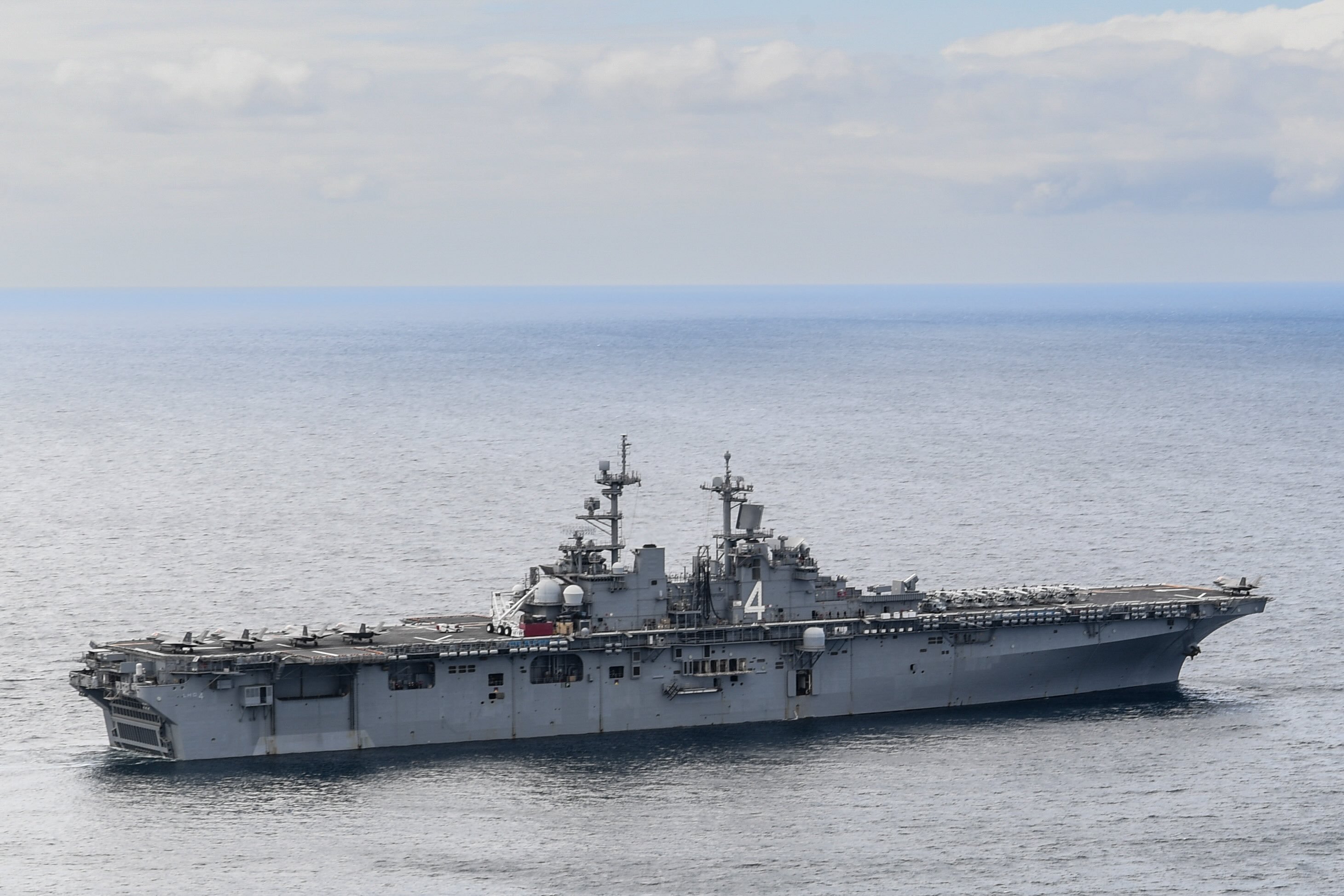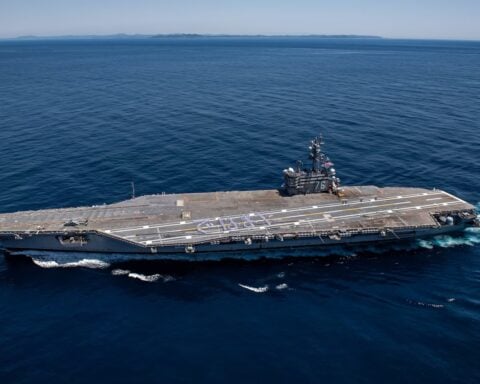
Even with space available in shipyards, fewer than 40 percent of Navy ships completed availability repairs on time, the Government Accountability Office’s director of defense capabilities and management told the Senate Armed Services readiness subcommittee last week.
Diana Maurer told the Senate panel Wednesday her office put shipyard conditions second only to F-35 Lightning II sustainment costs as the most worrisome readiness issues facing the services.
“We see readiness increasingly strained,” she added. In the case of the yards, including the optimization money to modernize the public yards, GAO wants the Navy to develop design, schedule and sustainment costs to avoid the hundreds of millions in overruns marking dry dock work in Pearl Harbor.
According to the report, “The Navy has not developed a full cost and schedule estimate for its Shipyard Infrastructure Optimization Program (SIOP) – an effort to improve its dry docks, facilities, and equipment – and reports that it will not be able to do so until Fiscal Year 2025. In the interim, the Navy plans to provide annual updates of the estimated costs of SIOP projects it intends to undertake during the next 5 years. The Navy reports that it cannot develop an estimate for the full SIOP until 2025, after each shipyard completes its detailed infrastructure plans identifying specific facility projects.”
Dry dock conditions in public and private yards, availability and repair and construction delays dominated hearings in the House and Senate this week, starting with the question of whether USS Boxer (LHD-4) could find space for needed work.
Boxer will be repaired pierside, but that raised questions over the readiness of ships in the fleet and what lies ahead in the building.
Testifying before the House and Senate Armed Services Readiness panels Tuesday and Wednesday, Adm. James Kilby said complicating problems in repair beyond the starboard rudder and bearing failure that forced Boxer to return to San Diego on April 1, is the ship’s aging propulsion system.
“We found our amphib ships – the big decks in particular with steam plants – are having larger growth work than most of our ships and it’s a challenge because of availability of parts, artisans, etc.,” he added in his Tuesday testimony.
Boxer was commissioned in 1995.
Kilby told the Senate panel he agreed that “ship production and repair” topped the Navy’s list to improve fleet readiness.
At both hearings, problems with Boxer and the state of the amphibious ships in the fleet topped members’ questions on other aspects of readiness. Kilby in his opening statement said the Navy is working with the private and public yards to cut the “days of maintenance delays” before returning to service through better planning on coming in for work, identifying long-lead items needed and workforce size and skills. He did note a slight increase in on-time repair completion from 36 percent to 41 percent for surface ships.
While the Navy decided to employ divers to repair Boxer rather than move to drydock, the work could take from six weeks to two months to complete.
What drew both the House and Senate panels’ immediate concern was how few dry docks would be available for this repair and, if needed, for battle damage. As USNI News reported, “The dry dock large enough to accommodate Boxer at BAE Systems’ San Diego repair yard is occupied by an availability for Littoral Combat Ship USS Oakland (LCS-24). The nearby General Dynamics NASSCO dry dock is occupied by guided-missile destroyer USS Chung Hoon (DDG-93), which is undergoing an availability to install the AN/SLQ-32(V)7 Surface Electronic Warfare Improvement Program Block 3. Moving either of the warships would extend both availabilities.”
Chair Rep. Michael Waltz (R-Fla.) said in his opening statement that delays in maintenance and repair in public and private shipyards are having a direct impact on readiness. The Navy has announced it is investigating the causes of the failure on Boxer from either materials, parts or installation.
At the Senate hearing, ranking member Sen. Dan Sullivan (R-Alaska) said, “the Navy is in crisis” over repairing ships on time and budget and building new submarines and surface vessels well below the pace China is setting.

When Gen. Christopher Mahoney, assistant commandant of the Marine Corps, was asked at the House hearing how many amphibs were needed to meet specified requirements, he said “nine in play.” That number was not being met when Boxer returned and the Bataan Amphibious Readiness Group was completing a nine-month deployment.
That means the readiness group would have one large-deck amphib like Boxer for aviation and preferably two LHDs on a deployment, Mahoney said.
“All the big decks are critical” in meeting combatant command requirements, Mahoney told the Senate panel. With Boxer pierside awaiting repair, “it’s out of balance.”
Boxer’s ARG was supposed to depart in January.
At the Senate hearing, Mahoney was pressed on the Navy’s planned delivery schedule of eight landing ships medium instead of the 35 the Marine Corps says are needed for future operations in the Indo-Pacific by the late 2020s. “We’re late to need. We don’t see critical mass until the 2030s.”
He added vessels being proposed as “bridging solutions” until the 35 are delivered “are not ideal.”
After being asked whether the specialization in private yards – such as Newport News building aircraft carriers and submarines and Electric Boat building submarines – is causing delays in construction and repair, Kilby said, “I need more yards – to outsource work.” He added that he meant both for construction and repair.
To expand existing yards, Kilby added, there are questions of needing more real estate for expanded operations, advancing computer-assisted design for different classes of ships and turning a “very green” newly recruited workforce into skilled welders and electricians. He noted the steps Electric Boat has taken to build up its workforce to meet Navy requirements for one Columbia-class ballistic missile submarine and two Virginia-class submarines in the same year.
Sullivan, during Wednesday’s hearing, raised questions over “how China can be cranking out 10 to 12 ships” a year, while the United States can only deliver one. The Navy in the past and again at a hearing Thursday said that for the last 30 years, Beijing has invested heavily in shipyard construction, modernization and expansion.
At the same time, American commercial yards either closed or turned away from large projects, moving into areas such as drilling rigs and barges.
On Thursday, the GAO’s latest report on shipbuilding recommended a number of steps adopted from commercial shipbuilding that the Navy should consider staying closely with mature designs when building second ships in a class that could speed construction and hold down costs.
“Fincantieri officials told us that the company reduces time and labor hours for functional design by 90 percent or more for ‘sister’ ships – a second ship on the same contract – by carrying over most of the previously validated design of the first ship to the sister ship design. By managing design changes in a manner that minimizes the amount of ship spaces affected, commercial builders and buyers limit total risk to the ship design and maximize the shipyard’s experience” in the follow-on construction.
One way to increase capacity in domestic public and private shipyards and build up the nation’s sealift fleet would be to move construction of vessels such as roll-on-roll-off cargo ships to nations like Korea, Rep. Austin Scott (R-Ga.) said at the House hearing. He added Seoul’s yards are producing 25 of those ships annually, while the United States produces one “every two years or so.”
Sen. Mazie Hironho (D-Hawaii) and the Senate panel’s chair, was skeptical about the value of moving more Navy repair work overseas.





